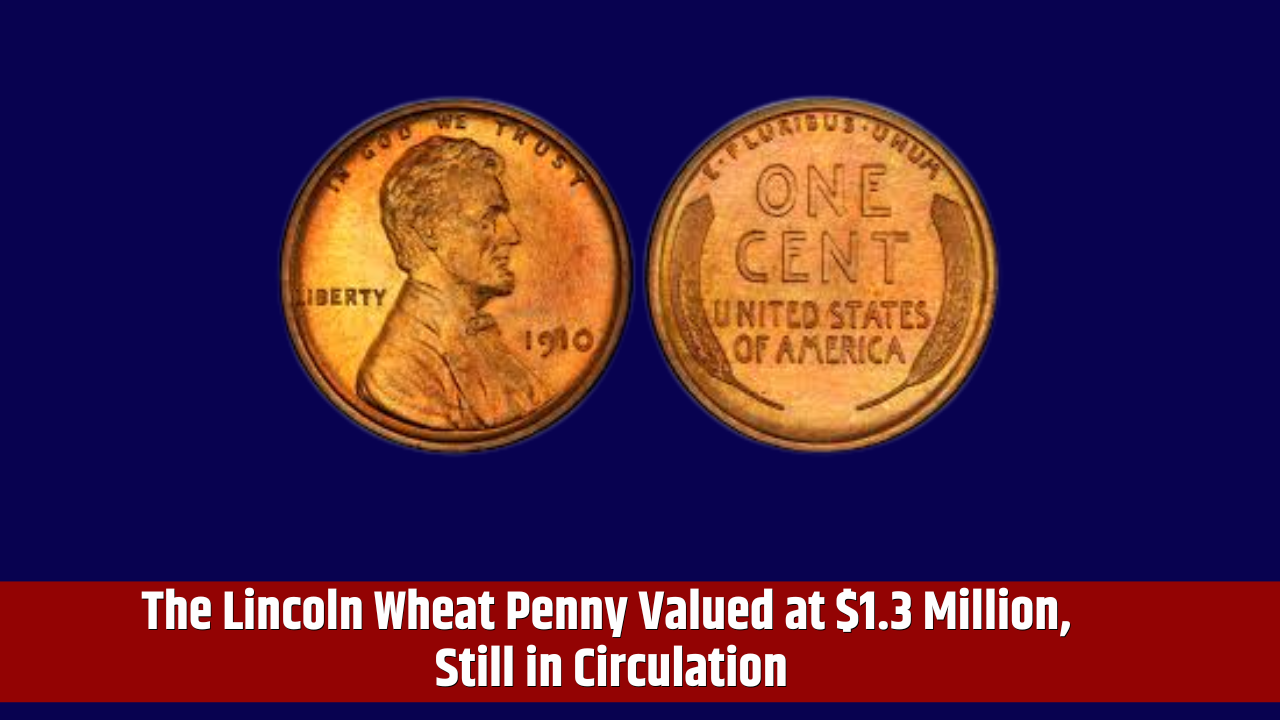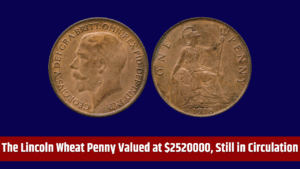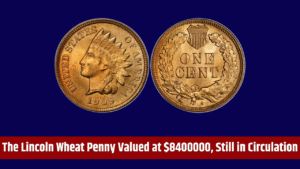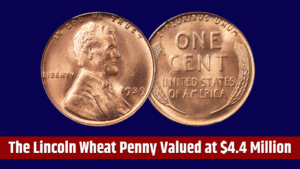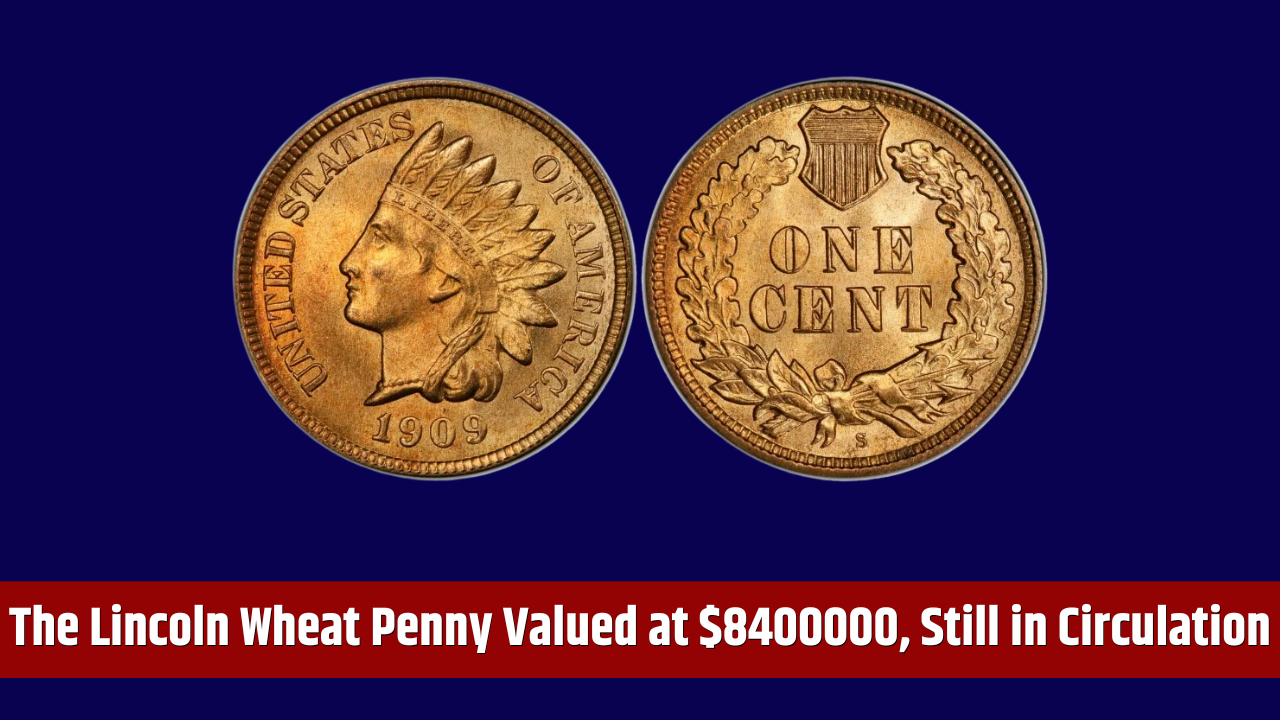The Lincoln Wheat Penny, typically seen as just a simple one-cent piece, has made headlines recently. A rare 1943 copper version of this iconic coin has been valued at a staggering $1.3 million—yet incredibly, examples of it are still believed to be circulating today. Let’s dive into what makes this tiny piece of history so valuable and why collectors everywhere are on the hunt.
The History of the Lincoln Wheat Penny
Introduced in 1909 to commemorate Abraham Lincoln’s 100th birthday, the Lincoln Wheat Penny quickly became a beloved piece of American currency. Featuring Lincoln’s portrait on the obverse and two wheat stalks framing the words “One Cent” on the reverse, the coin was minted until 1958. Over the decades, it gained a special place in the hearts of collectors and everyday Americans alike.
While most Lincoln Wheat Pennies are only worth face value, a few rare versions have skyrocketed in value thanks to their unique features or minting errors.
The Story Behind the $1.3 Million 1943 Copper Penny
During World War II, the U.S. Mint faced a critical copper shortage. To conserve copper for the war effort, pennies in 1943 were supposed to be minted using zinc-coated steel. However, a small number of copper planchets mistakenly remained in the coin presses, resulting in the rare 1943 copper Lincoln Wheat Pennies.
Only a handful of these coins exist today, making them one of the most coveted rarities in American numismatics. The $1.3 million valuation stems from the coin’s rarity, historical significance, and its remarkable condition. Each element adds to its mystique and skyrocketing value.
Why Rare Coins Still Circulate
You might wonder how a million-dollar penny could still be floating around. The truth is that many people simply don’t realize what they have. The copper 1943 pennies look strikingly similar to other ordinary pennies, so unless someone inspects their change closely—or is particularly coin-savvy—they might easily overlook one.
That said, as knowledge about these rare finds spreads, fewer are remaining in circulation. Still, the possibility exists, making every handful of change a potential treasure trove.
| Year | Material | Estimated Value |
|---|---|---|
| 1943 | Steel (common) | $0.10 – $2.00 |
| 1943 | Copper (rare error) | Up to $1.3 million |
What Makes Rare Coins Valuable?
Several critical factors determine a coin’s value:
- Rarity: The fewer there are, the higher the demand and price.
- Condition: Coins in mint or near-mint condition fetch significantly higher prices.
- Historical Significance: Coins tied to important events or periods, like World War II, often carry added value.
- Mint Errors: Mistakes in production, such as wrong materials or misprints, make a coin exceptionally rare and collectible.
Collectors prize the 1943 copper Wheat Penny not only because of its scarcity but also because it represents a unique error during a pivotal time in American history.
How to Spot Valuable Wheat Pennies
If you’re hoping to find a valuable coin among your pocket change, here are some quick tips:
- Check the Year: 1943 is the golden number for the rare copper penny.
- Look at the Material: Steel pennies stick to magnets; copper ones do not.
- Inspect the Condition: Coins without significant wear, scratches, or corrosion are much more valuable.
- Search for Errors: Misprints, double dies, or off-center strikes can add to a coin’s value.
Bonus Tip:
Be cautious when cleaning coins. Improper cleaning can significantly reduce their value. If you’re unsure, it’s better to leave them as they are.
The discovery of the $1.3 million 1943 copper Lincoln Wheat Penny serves as a thrilling reminder that valuable treasures might still be hiding in plain sight. Whether tucked away in an old jar or jingling in your spare change, rare coins continue to capture the imaginations of collectors and casual finders alike. So next time you get a handful of pennies, take a closer look—you might just be holding a small fortune.
FAQs
How rare is the 1943 copper Lincoln Wheat Penny?
Extremely rare—only a few examples are known to exist.
How can I tell if my 1943 penny is copper or steel?
Use a magnet. Steel pennies will stick, copper ones won’t.
What should I do if I find a rare coin?
Get it authenticated by a professional grading service before selling.
Is it safe to clean old pennies?
Generally, no. Cleaning can lower the coin’s value significantly.
Where can I check my coin’s value?
Websites like Coin Value Checker can help you estimate values.

